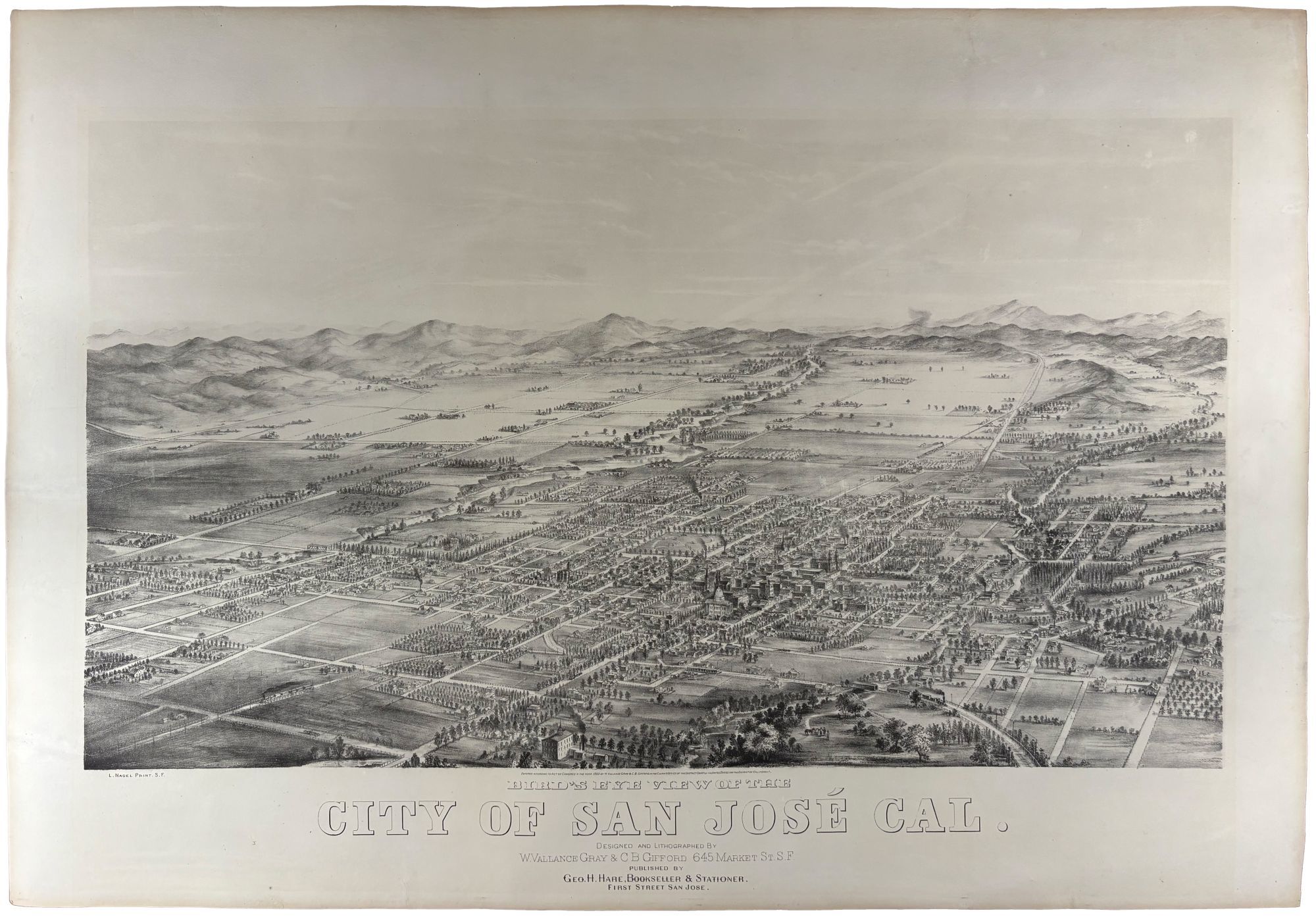Bird's Eye View of the City of San Jose Cal
- SIGNED
- San Jose: W. Vallance Gray & C.B. Gifford for George H. Hare, 1869
San Jose: W. Vallance Gray & C.B. Gifford for George H. Hare, 1869. Lithograph. A few expertly mended marginal tears. A sweeping lithographic bird’s-eye view of San José in 1869, portraying the young city and its grid of streets amid the fertile orchards and farmlands.
The present view was published at the time when rail links had begun shaping San José's role in the region: the San Francisco & San José Railroad was completed to the city in 1864, opening markets and drawing the valley into integration with coastal commerce. Lithographed by C. B. Gifford and W. Vallance Gray, the print presents San José from an elevated vantage, with its street grid, courthouse square and church spires set amid orchards, vineyards and irrigated fields. Tree-lined lanes and farmhouses ripple into the countryside; in the center distance the path of a railway is indicated tracing the route north, while the Guadalupe River and Coyote Creek wind through the fertile landscape. Founded in 1777 and briefly the state capital (1849-1851), San José was entering a new phase by 1869. The railroad's arrival in 1864 catalyzed population and agricultural expansion; by the late 1860s, the city had become the commercial hub for orchards of prunes, peaches, apricots, pears, cherries and apples. In the surrounding hills, the New Almaden quicksilver (mercury) mines continued as an economic anchor serving the mines of California's gold and silver belts. The present image serves as a documentary record of the moment when San José's agricultural and cultural ascendancy took shape.
Peters, California on Stone p 126; Reps, Views and Viewmakers of Urban America 374.
The present view was published at the time when rail links had begun shaping San José's role in the region: the San Francisco & San José Railroad was completed to the city in 1864, opening markets and drawing the valley into integration with coastal commerce. Lithographed by C. B. Gifford and W. Vallance Gray, the print presents San José from an elevated vantage, with its street grid, courthouse square and church spires set amid orchards, vineyards and irrigated fields. Tree-lined lanes and farmhouses ripple into the countryside; in the center distance the path of a railway is indicated tracing the route north, while the Guadalupe River and Coyote Creek wind through the fertile landscape. Founded in 1777 and briefly the state capital (1849-1851), San José was entering a new phase by 1869. The railroad's arrival in 1864 catalyzed population and agricultural expansion; by the late 1860s, the city had become the commercial hub for orchards of prunes, peaches, apricots, pears, cherries and apples. In the surrounding hills, the New Almaden quicksilver (mercury) mines continued as an economic anchor serving the mines of California's gold and silver belts. The present image serves as a documentary record of the moment when San José's agricultural and cultural ascendancy took shape.
Peters, California on Stone p 126; Reps, Views and Viewmakers of Urban America 374.


